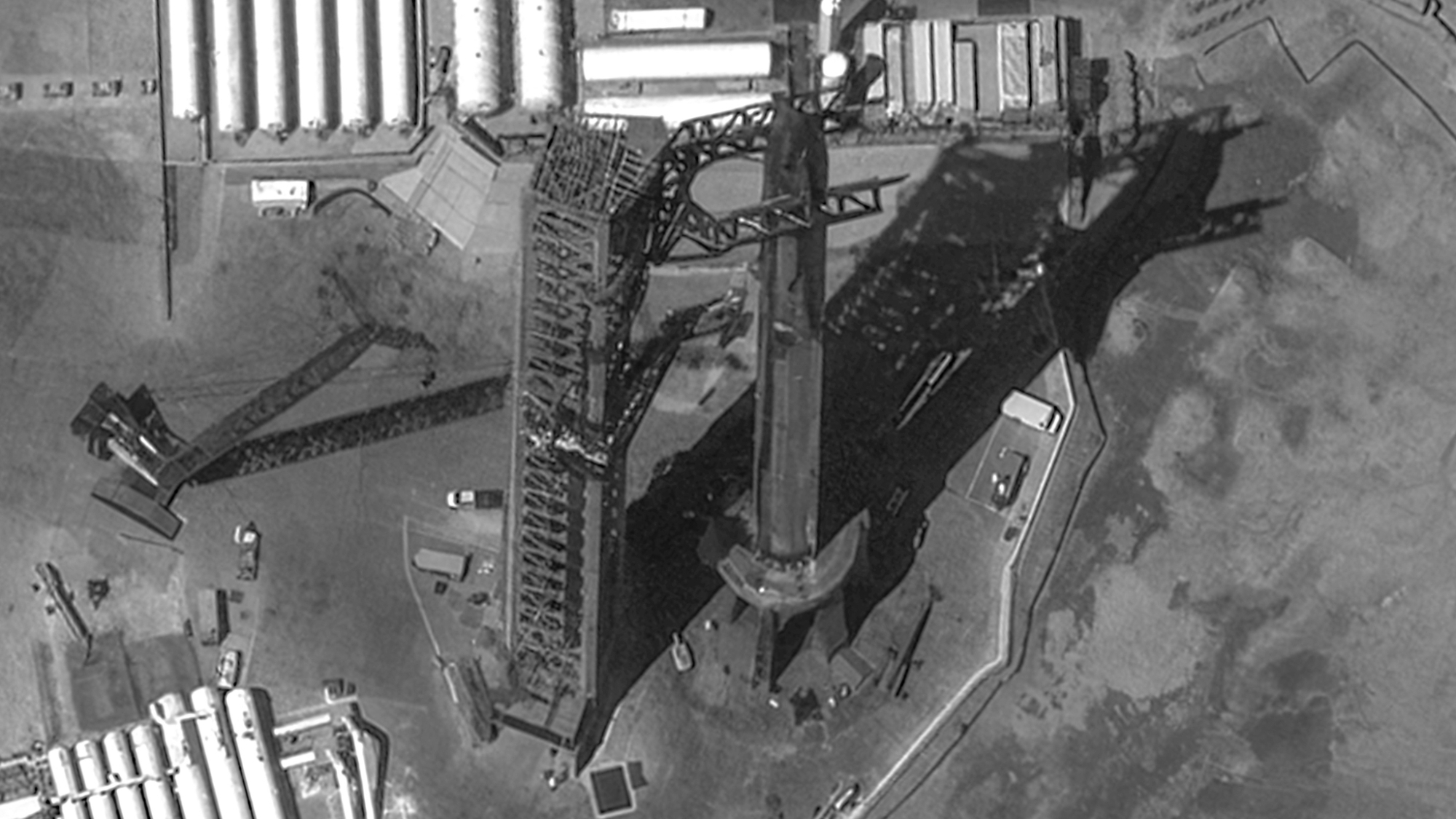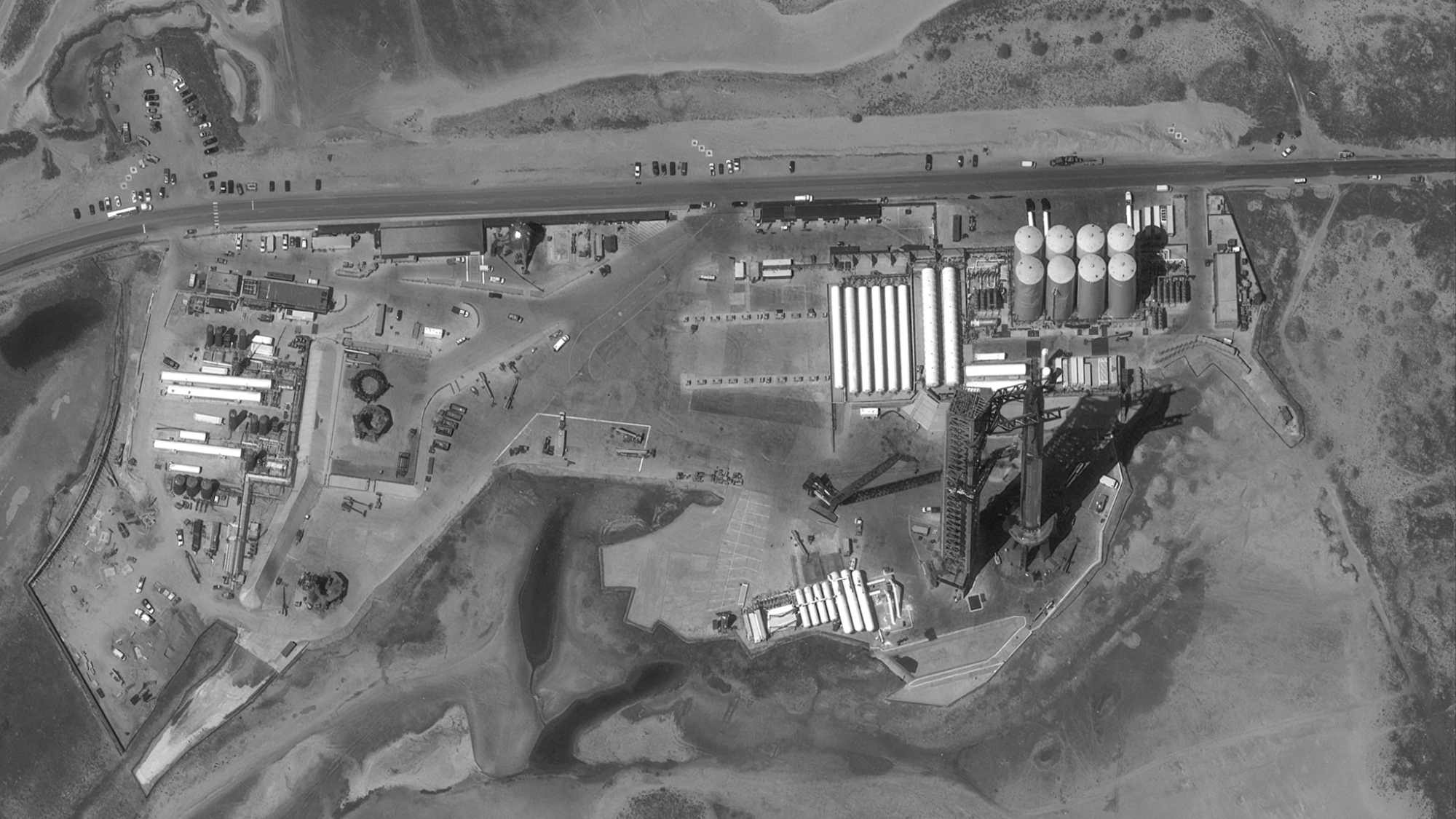
Starship even looks big from space.
SpaceX stacked its latest Starship vehicle on Tuesday (Sept. 5), lifting an upper-stage prototype called Ship 25 atop a first stage variant known as Booster 9 on the orbital launch mount at Starbase, the company's site in South Texas.
That same day, Maxar Technologies' WorldView-1 satellite captured a great photo of the newly stacked rocket, which stands nearly 400 feet (122 meters) tall — and Maxar posted the shot on X (formerly known as Twitter) for all of us to see.
Related: Relive SpaceX's explosive 1st Starship test in incredible launch photos

As Maxar noted in that Thursday (Sept. 7) X post, the Ship 25-Booster 9 duo are being prepped for liftoff in the near future — the second ever for the Starship program.
The first test flight of a fully stacked Starship occurred on April 20 from Starbase. It aimed to send the upper stage partway around Earth, culminating in a splashdown in the Pacific Ocean near Hawaii. But the vehicle suffered several problems, including the failure of its two stages to separate as planned, and SpaceX beamed up a self-destruct command not long after launch.
The goals of the upcoming second flight will be similar to those of the first, SpaceX founder and CEO Elon Musk has said. And he wants it to happen soon, stressing that Booster 9 and Ship 25 are ready to launch whenever the U.S. Federal Aviation Administration (FAA) grants a license.
Get the Space.com Newsletter
Breaking space news, the latest updates on rocket launches, skywatching events and more!
The FAA is still reviewing the mishap report that SpaceX filed about the April 20 launch. That flight caused considerable damage to Starbase's orbital launch mount and rained dirt, chunks of concrete and other debris down on the surrounding area.
Starship is the biggest and most powerful launcher ever built, boasting nearly twice as much thrust at liftoff as NASA's Space Launch System megarocket. Musk believes that the fully reusable Starship can revolutionize spaceflight, making settlement of the moon and Mars economically feasible.
Join our Space Forums to keep talking space on the latest missions, night sky and more! And if you have a news tip, correction or comment, let us know at: community@space.com.

Michael Wall is a Senior Space Writer with Space.com and joined the team in 2010. He primarily covers exoplanets, spaceflight and military space, but has been known to dabble in the space art beat. His book about the search for alien life, "Out There," was published on Nov. 13, 2018. Before becoming a science writer, Michael worked as a herpetologist and wildlife biologist. He has a Ph.D. in evolutionary biology from the University of Sydney, Australia, a bachelor's degree from the University of Arizona, and a graduate certificate in science writing from the University of California, Santa Cruz. To find out what his latest project is, you can follow Michael on Twitter.
-
bryant Reply
why the dismay at progress, check off the boxes and light it up. we got to evolve or be damned if we don't.Admin said:Maxar Technologies' WorldView-1 satellite captured a great photo of SpaceX's Starship vehicle on the launch pad in South Texas ahead of its upcoming test flight.
SpaceX's Starship rocket spotted from space ahead of key test flight (satellite photo) : Read more









